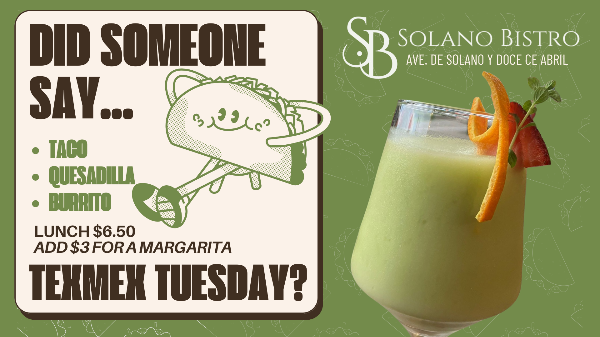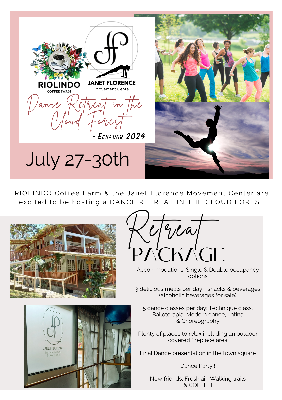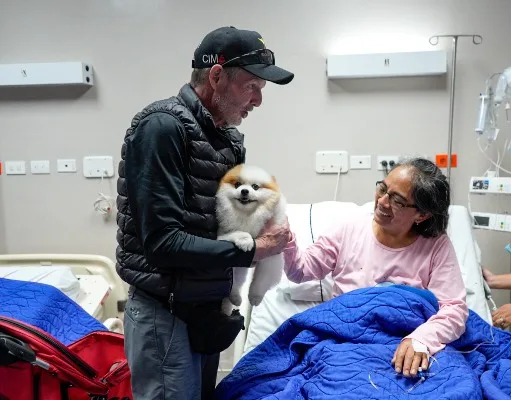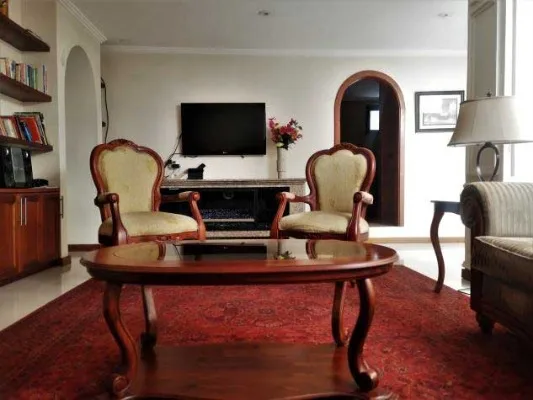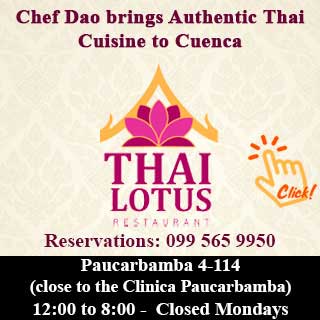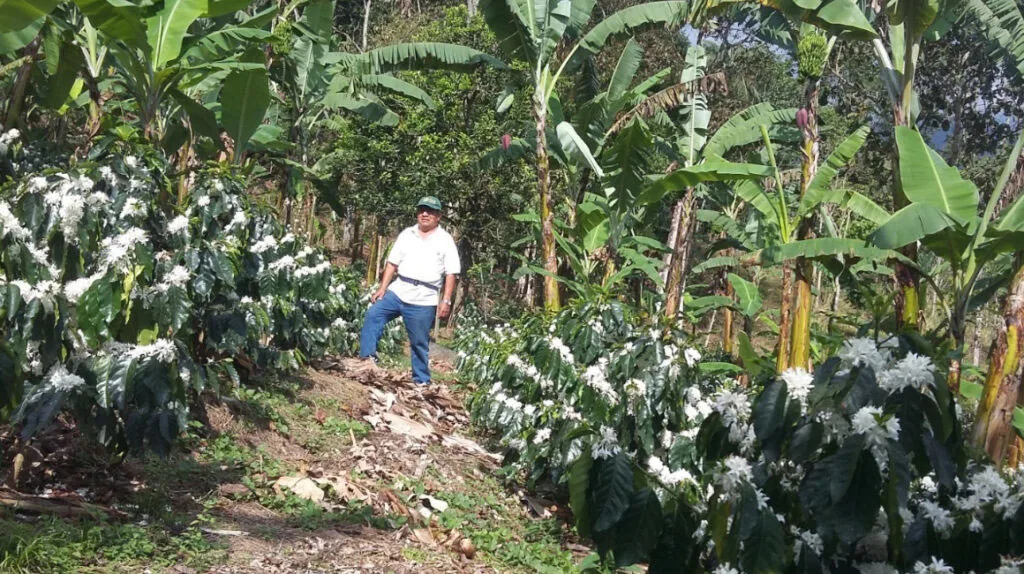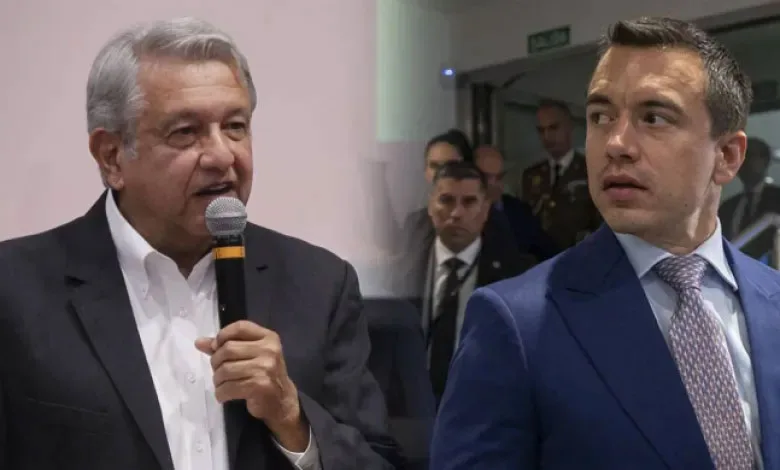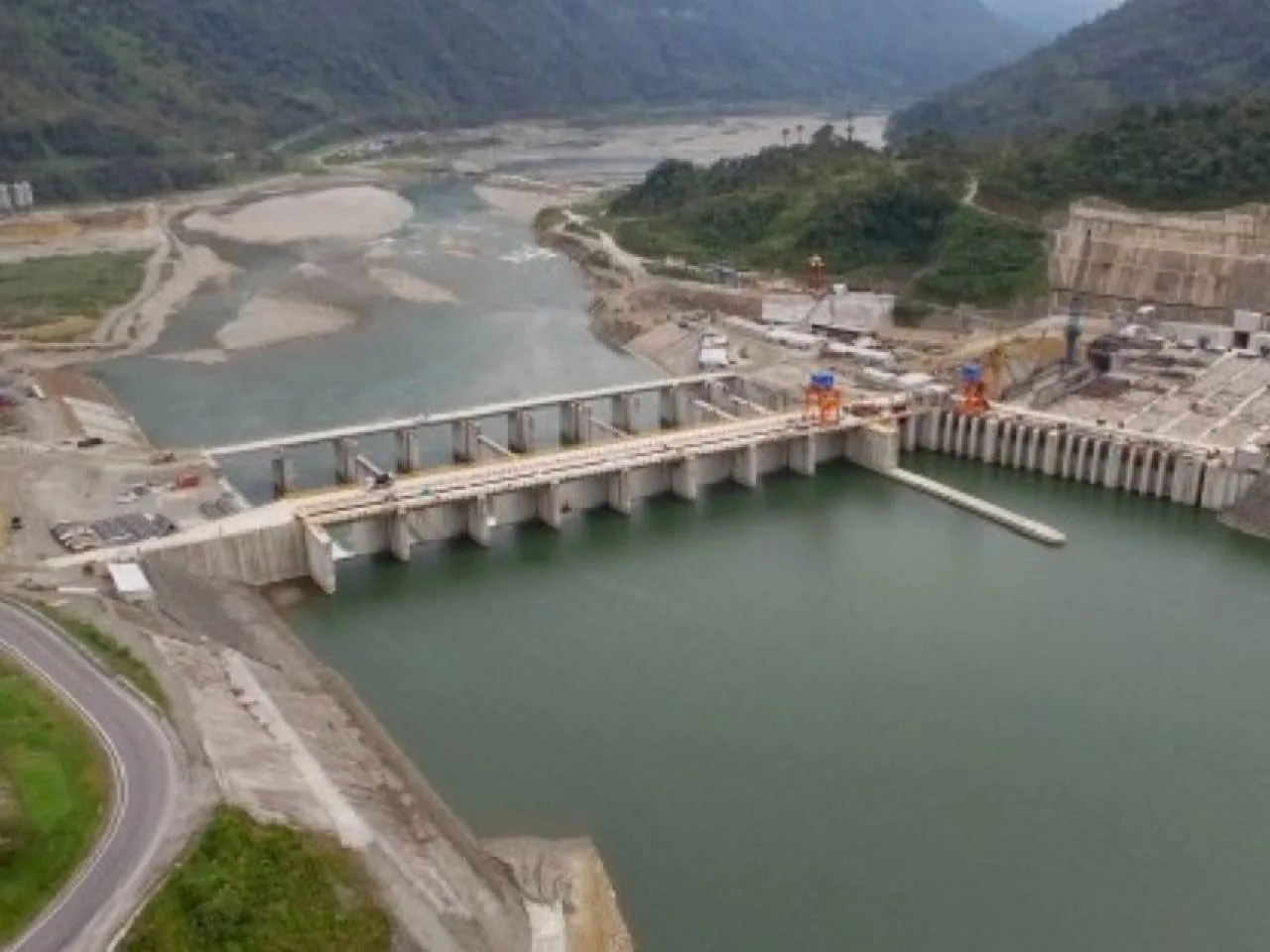Our mountain of dreams: After months of training three expats reach the summit and touch the sky

Cuenca team and Chimborazo in the sunglasses of mountain guide Rodrigo Donoso at the summit.
By John Keeble
It is 3 a.m. and pitch black as we struggle up the first steep climb towards a dream – to summit the ice and snow peak of Volcán Carihuairazo a few kilometres from the mighty Chimborazo in Ecuador’s volcanoes region.
The night sky, before we turned on our headlamps, was crystal clear in the crisp air. It felt like being in a dome of starry wonder, a glory rarely seen in our light-polluted planet.

Climbing … dawn over Sangay volcano.
Somewhere, up there along our climbing trail from 4,300 metres (14,000 feet) to 5,000 metres (16,400 feet), was the highest of Carihuairazo’s three peaks as we walked toward it under a crescent moon.
Dreams come easily. Turning them into reality is something different. Especially for expat retirees tackling their first high-mountain climb.

Tough going, heading uphill.
Three months of increasingly tough Cajas endurance training at around 4,000 metres and one failed attempt on Carihuairazo … the strengthening wind was not the only edge of uncertainty.
Three of us – Steve Dow, Bob Itami and I – strode on with our two high-mountain guides, Rodrigo Donoso and Raúl Tenemaza Flores, plus their two assistants. The clump of our heavy-duty mountain boots broke the enveloping silence, the heartbeat of the climb overlaid here and there with a word or a brief stop after particularly steep sections. Our rest pauses were just long enough to get muscles calmed and dry throats eased, but not long enough to take off our 40 lb backpacks.

Pushing onward.
A breath-taking hour’s climbing got us to the first frozen ice and snow of the glacier. Ever-changing blacks and browns on the headlamps-lit trail before the glacier suddenly gave way to white and millions of ice diamonds sparkling as we passed over them.
The ephemeral nature of these tiny dreamscapes in our headlamp beams warned of the end of this white world. Global warming is eroding the glacier and Donoso, a mountain man by nature with encyclodaedic knowledge, says he estimates that it will be gone in a decade.
A slew of black volcanic rocks, like prehistoric creatures captured by the snow, rose up in front of us. We rested on them to don the last of our high-mountain equipment – crampons for our boots, harnesses for our bodies, ice axes for our freezing inexperienced hands.
Rodrigo attached his rope to Bob; and Raul took his rope to Steve and then me. One carefully-built team of novices carefully reordered into two “ropes” by the experienced eyes of Rodrigo and Raul, both of whom had climbed Ecuador’s volcanoes hundreds of times.

Not far now. (Photo: Mario Gutiérrez)
For us, the dreamers determined to find a reality of ourselves and the mountain, this was it. The climb. And it felt good. Our training, tough hiking supplemented with tough biking, gave a bedrock of confidence encompassed by the professional toughness of Rodrigo and Raul.
As we got ready for the “off”, the moon reflected the waiting sun’s light on us and the mountain gods signalled their approval with weather that climbers pray for.

The toughest section nearing the top.
“Keep the ropes taut,” said Rodrigo in reminders about safety. “If you fall, get the ice axe into the ice to hold you and anyone else on your rope.”
We set off in a bizarre world of light and dark, snow whites and black shadows, and gradually with mountain’s resistance grew with steeper gradients and harder footholds. The stiff, heavy mountain boots and the unfamiliar crampons unwillingly came under our control; and the two layers of gloves shielded hands from the perils of bare-metal ice axes.

Taking in the view.
The physical strain built, step by step, and at around 4,500 metres (14,700 feet) our lungs were being touched by the thinness and temperatures of the air. Another 600 metres (1,900 feet) of elevation gain to conquer Carihuairazo’s peak. Pan comedo, as we liked to joke… except the high crags looked far from easy peasy at the moment.
Then the going got tougher with a slog to a ridge. But, as we topped the high edge, we stopped dead, taken aback by a sight no one could see and forget.

Celebratory photo with Rodrigo Donoso (front), and (l-r) John Keeble, Bob Itami and Steve Dow.
We were facing east, and the horizon glowed with dawn fire while, centre stage 50 kilometres from our mesmerised eyes, the classic cone of Sangay volcano shot smoke and debris high into the air.

What goes up… (Photo: Raúl Tenemaza Flores)
To our south, father Chimborazo’s snow cap blazed in the dawn colours, and the west was still gripped by night’s strong hand.
But our eyes, torn from Nature’s dawn show, were drawn irresistibly to the north … and the steeply rising volcano-side that led, for those willing, to the summit. For me, there was finally enough light for my camera.
With the dawn came the warning of the day’s sun. It was time to get moving again. We untangled our climbing ropes, and started upwards for the final ascent.

Steve Dow on the perilous down section with guide Raúl Tenemaza Flores.
We clanked across ankle-threatening rocks from an earlier fall, crunch up a sheer grind of rising ice, and finally challenged the head of the volcano – a perilous near-vertical climb up ice, snow and loose rocks.
And then, like the ledge of dawn, we were blinking into the sun and peering down into the sheer drops from the summit. We had made it!
“I was concerned when I first knew your ages but I realised when I met you that you were all very fit,” said Rodrigo later. “I have guided much younger people who turned back when the climb was harder than they expected.”
On the summit, we had 20 minutes of photographing, flying a drone, videoing, and enjoying the views before making the descent.
Climbing up was tough. But going down was a lot more difficult in a different way: not the muscle pain of gaining elevation, but the precarious task of trying to stay upright and on track.
We hesitated on the edge of the summit, getting ourselves organised and mentally ready for the vertical first section.

Nearing the bottom of the ice field.
Then over the edge – this time with me leading our rope and Mario, a Colombian kick-boxing champion now living in Ecuador and working as an assistant in Rodrigo’s business, finding the best “track” in the chaos of loose rocks, ice and snow.
Gradually, we got back on to the steeply-descending ice fields and the tough hike down. A celebratory bottle of champagne was waiting for later. We had lived our dream.

The long hike back to base camp.
If you want this kind of experience email Rodrigo at aventurag@yahoo.com or call him on 099 969 4867. You can probably buy a cheap package somewhere but Rodrigo is simply the best – you can trust the success and safety of your trip to him.
We told him what we wanted – the summit plus some other challenging hikes – and stayed full-board at his comfortable posada in sight of Chimborazo and Carihuairazo. It was like staying in something between a home and a museum to mountain climbing. Rodrigo’s wife provided wonderful food in the Colombian style – including vegan fare for me. He “packaged” our requests, including transport from Cuenca and the renting of equipment, for a fixed all-inclusive cost.





